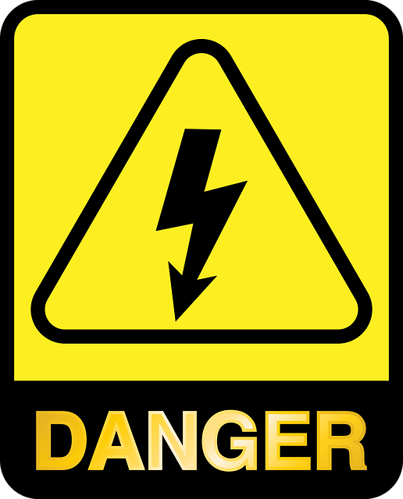Electrical Safety
What is Electrical Safety?
Electrical safety is crucial to ensure a secure and healthy working environment for employees who work with electronic equipment.
Electricity is an essential source of power, but it can be dangerous and even fatal if electrical safety measures are not followed.
Therefore, it is crucial for Environmental, Health, and Safety (EHS) teams to implement and maintain electrical safety protocols.
Electrical safety is a set of practices and procedures to reduce the risk of injuries or fatalities due to electrical accidents.
It involves using safe equipment, proper training, and adherence to established rules and regulations. Electrical safety may include installing ground fault interrupters, using personal protective equipment, like gloves and boots, and ensuring equipment is properly maintained.
 Are your employees safe from electrical dangers at work?
Are your employees safe from electrical dangers at work?
The Importance of Electrical Safety in the Workplace
Electrical safety is essential because it protects workers from electrical hazards and prevents injuries, fatalities, and property damage.
The Occupational Safety and Health Administration (OSHA) lists electrical injuries as one of the top four causes of workplace fatalities, and workplace electrical accidents account for hundreds of fatalities each year.
Employees who work on or near electrical systems and equipment are particularly vulnerable to electrical hazards. Therefore, it is imperative that EHS teams understand electrical safety risks and take steps to mitigate them.
Electrical Safety Prevention
One of the best ways to prevent electrical accidents is by adhering to electrical safety protocols.
EHS teams can take steps to ensure electrical safety measures are set in place: routine equipment maintenance, continuous education and training helps employees understand potential hazards and how best to avoid them.
Periodic inspections should be done on the job site to ensure everything is to code, and all equipment is maintained up to standard.
Prevention starts with making all areas electrical-safe. Be sure to have employees report any flickering lights, faulty wiring, or any electrical hazards immediately. Encourage employees to be safety-minded always.
Learning about electrical safety is critical for both employees and employers. For employees, adequate electrical safety education enables them to identify potential hazards in the workplace and how to protect themselves when working with electrical equipment.
Education for employers is paramount to ensure equipment is up to date, and work environments are up to code to promote a safer work environment.
Implementing Electrical Safety Procedures
Implementing appropriate electrical safety procedures is important to maintain electrical safety standards in the workplace.
This includes the proper use of personal protective equipment (PPE), such as insulated gloves, eyewear, and voltage-rated clothing.
Personal protective equipment plays a vital role in providing protection to employees who are working in areas where they may be exposed to electrical hazards. PPE can include insulated gloves, protective sleeves or suits, and safety glasses.
It is essential that employees are trained on the appropriate use of PPE and provided with the right equipment for the job.
In addition to PPE, employees should also wear appropriate clothing, such as long sleeves and pants, to protect themselves from accidental electrical contact.
Employees must adhere to these protocols, and employers need to make sure they provide sufficient PPE to employees working near electrical hazards.
Hazard Labelling and Signage
Electrical hazard labelling and signage play a vital role in ensuring electrical safety in the workplace.
These labels and signs can identify the hazards, communicate instructions, and remind employees of the potential hazards they may face.
All electrical panels, circuit breakers, and switches should be clearly labelled, and warning signs should be displayed in all areas where electrical hazards exist.
Regular Inspections and Maintenance
Regular and thorough maintenance and inspections of all electrical equipment are essential to ensure that they are safe and in good working order.
This includes testing, tagging, and inspecting equipment regularly, and identifying any faults or issues with the equipment. If equipment is faulty, it should be removed from use immediately.
Use EcoOnline to Track Electrical Hazards
EcoOnline makes it easy for companies to better track safety hazards in the workplace as well as list down all the safety steps taken to prevent any hazards.
This information can then be used by workers to determine if the safety hazards are working effectively. It allows for active incident reporting and makes it easy for companies to make a plan about how to improve overall safety in the workplace.